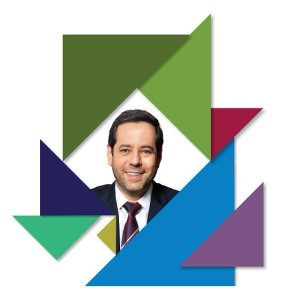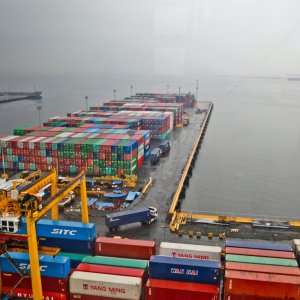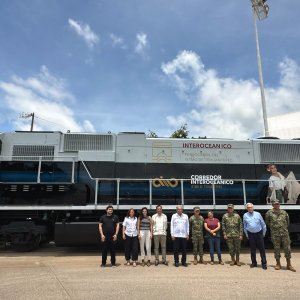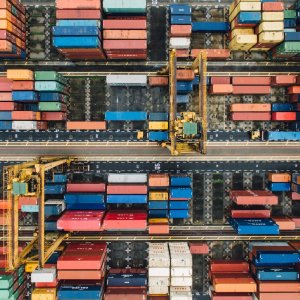Exact Storage Control Systems to Prevent Product Loss

STORY INLINE POST
Q: How has the government’s new purchasing scheme impacted the pharmaceutical supply chain?
A: The old Mexican model of distribution was based on states selecting what and where to get their medical supplies for the next fiscal year. State governments would release a tender in which manufacturing companies would participate. The winning companies would directly, or through distributors, deliver their products to public institutions. This has been strongly criticized as it makes the distributor an intermediary between the government and the supplier. Whatever the distribution option was, deliveries arrived to state warehouses and they were later distributed to end consumers.
There are warehouses that have held onto products for one or two years, which was evidence of the delicate distribution problem that existed with the state governments. The “last mile” part of the process was lacking.
After the government changed the scheme to a centralized purchase, each state determines its required SKUs, which must fall under an established price, giving the federal government control over every purchase. Some companies will cover a few products, while others will cover larger volumes. One of the main worries regarding this scheme is the capacity of companies to deliver a certain product, which could cause shortages.
Q: What is the role of logistics companies in this process?
A: Logistics companies need to negotiate with the manufacturer. Usually, logistic companies will finance manufacturers for the distribution of products and assume any added costs that are later recovered by the government’s payment. The new scheme takes logistics companies out of the equation, with everything now managed directly with the manufacturer. The main goal of the scheme is to provide timely payments to ensure the manufacturer has enough capital to produce.
What is happening now is that the federal government is releasing tenders and distributing supplies to states, even though the states sometimes do not have a need for that specific product or have the urgency for more supply.
The government first tried to absorb the distribution costs by itself but then realized the challenge that entailed because it did not have experience and therefore the knowledge to handle this properly. The second option was to manage this through IMSS and ISSSTE services, but their capacity was not going to cover it. This led the government, specifically SAT, to seek logistics operators specialized in pharma. That is how they found GNKL.
When we started working on plans for distribution, we realized that manufacturers were not ready for the complexity of direct purchases and this caused delivery delays. It took four months for manufacturers, the government and us to learn from the new scheme. However, the centralized purchasing scheme is expected to improve each time, as we already went through the learning curve.
Q: How has the centralized purchasing scheme impacted GNKL’s use of technology and innovation?
A: GNKL has developed a software system called Administration and Logistics System for the Health Sector (SIALSS). This system has been in development for 15 years. SIALSS is installed at hospital warehouses, regardless of whether they are located in large cities or rural communities. It allows us to measure the real consumption of the facility. This has given the authorities real-time information that allows them to create accurate consumption plans for future purchases. SIALSS also allows the possibility to measure expiration dates, oversupply, stock with relation to consumption behaviors and also the profile of the patient consuming the supplies.
The system works through very basic infrastructure systems. We wanted to make it easy to implement at different facilities, independently of their technological capacity. SIALSS data is stored on the cloud, which allows us to generate reports that can be easily accessed through a smart device. SIALSS is the perfect tool to measure consumption rates and red flags related to the generation of fake consumption needs, which would create additional costs.
To ensure the accuracy of all the data, GNKL analyzes everything the system generates and we evaluate all the different items to develop a detailed report to identify possible supply deviation or expiration dates. We also send this report to supervisors at the consumption points to validate the date, inventories and the results from the system. This is very useful for detecting supply inconsistencies and reporting them to the authorities.
Tracking is another priority in this sector. With NOM -059-SSA1-2015, every product that is delivered from the plant to the government’s warehouses must be perfectly identified. COFEPRIS has very clear requirements that allow the safe storage of that product. Tracking provides all the information related to the packages sent to every dependency, ensuring a clear and transparent delivery processes. Tracking is known as the penultimate mile; it works as it would with normal deliveries for common users but it is part of a much more complex system, as we deal with the government’s medicine supply.
Q: How would you describe your experience working with COFEPRIS under the López Obrador administration?
A: From a commercial point of view, there was a disruption after Seguro Popular was replaced with INSABI. The company usually talks with Mexican healthcare authorities to offer SIALSS and our logistics solutions, but the arrival of INSABI has created an operational gap that has hindered these talks as authorities themselves do not have the functioning rules to know which funds can support a project like ours. The lack of clear operational bases has stopped many of our plans with the government. Now, with the COVID-19 pandemic, talks have become almost impossible.
However, COVID-19 has created an extraordinary demand for certain healthcare products at a very constant rate. For example, we have faced demand for large numbers of facemasks and surgical gowns. This has caused shortages as there are no more products in stock or in production. While our system can foresee these kinds of events, a contingency like this is basically impossible to predict as it depends on social responses and many different factors.
Q: How has your storage capacity increased?
A: GNKL works with a vertical storage system brought from Italy. This system is unique in Mexico and has gained us recognition from healthcare authorities. A computer system receives orders from each medical facility and it delivers the products needed, prioritizing those that are close to expiring. This is modular system that allows for better storage capacity.
Q: Where do you want to grow in the health sector?
A: First, we want to approach state authorities with SIALSS. For this year, there are six logistics operators that will be in charge of all centralized purchases. All of them will receive millions of medical supplies to distribute among the country’s eight regional divisions. When the product arrives to warehouses, there is still a big gap of control that SIALSS can fix perfectly.
GNKL can also be a distribution partner for the manufacturing sector, as we have the experience in putting together packaged supplies for the government. We can also offer companies a system that will facilitate the control of storage and distribution.
GNK Logística (GNKL) is a logistics company that designs and manages solutions for different sectors, including the pharmaceutical industry. The company owns several patents for tracing technology








 By Miriam Bello | Senior Journalist and Industry Analyst -
Wed, 12/09/2020 - 13:43
By Miriam Bello | Senior Journalist and Industry Analyst -
Wed, 12/09/2020 - 13:43
















